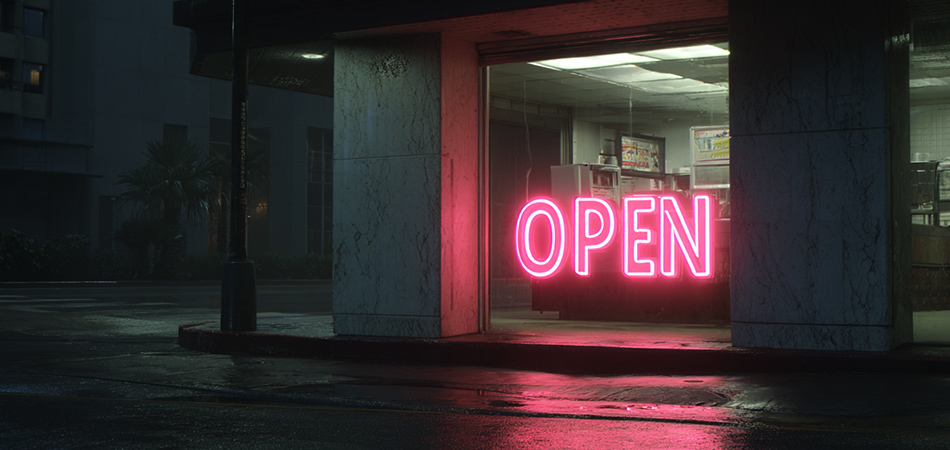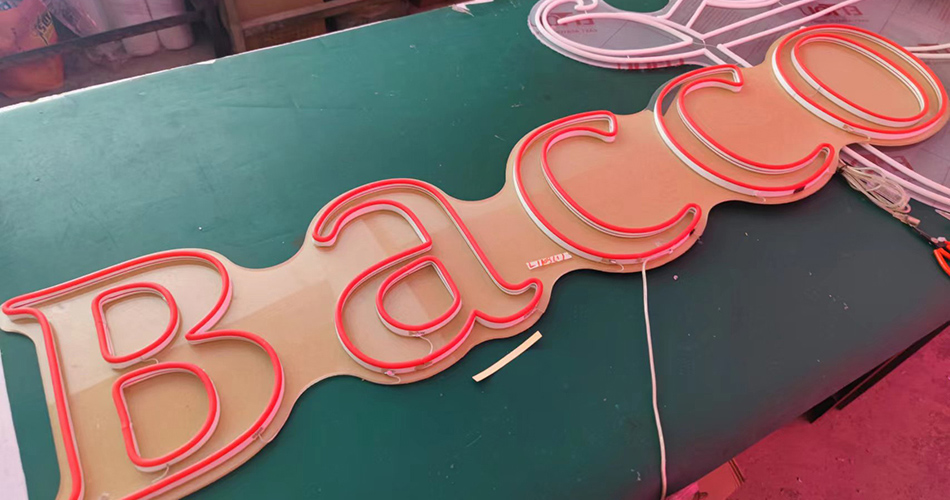Time:2025-07-03
The Indispensable Role of Open Signs in the Business Landscape
In the competitive world of commerce, an open sign serves as a fundamental yet powerful communication tool. It acts as a beacon, instantly conveying to passersby that a business is ready to welcome customers. Whether it's a small local café, a bustling retail store, or a specialized service provider, an open sign is more than just a piece of signage; it's a critical element in a business's marketing and customer - facing strategy. By simply indicating availability, an open sign can significantly boost foot traffic, enhance customer convenience, and contribute to the overall success of a business. In an era where consumers are constantly on the move and making quick decisions about where to shop or dine, a well - placed and visible open sign can make all the difference in attracting potential customers.

The Art and Science of Open Sign Design
Designing an effective open sign involves a careful blend of artistic creativity and strategic thinking. The visual appeal of the sign is crucial. Colors play a vital role, with bright and bold hues like red, yellow, and green being popular choices as they are highly visible and attention - grabbing. The choice of font also matters; it should be large, legible, and easy to read from a distance. Sans - serif fonts are often preferred for their modern and clean look, but script or decorative fonts can add a touch of personality and charm depending on the nature of the business.
Beyond aesthetics, the design must also consider functionality. The sign should be durable enough to withstand various environmental conditions, especially for outdoor use. Additionally, factors such as the size of the sign in relation to the storefront, the placement for maximum visibility, and the inclusion of additional elements like business hours or logos all contribute to a well - designed open sign that effectively serves its purpose.

Technological Advancements in Open Sign Manufacturing
The open sign industry has witnessed significant technological advancements in recent years. Traditional neon open signs, known for their classic and vibrant glow, have been a staple for decades. However, with the advent of LED technology, a new generation of open signs has emerged. LED open signs offer numerous advantages, including energy efficiency, longer lifespan, and greater design flexibility. They can mimic the look of traditional neon while consuming less power and being more environmentally friendly.
Moreover, smart technology is increasingly being integrated into open signs. Some modern open signs come with features such as remote control, allowing business owners to turn the sign on or off, adjust its brightness, or change its display settings from a mobile device. Others are equipped with sensors that can automatically detect ambient light levels and adjust the sign's brightness accordingly, further enhancing energy savings and visibility.
Diverse Applications of Open Signs Across Industries
Open signs have a wide range of applications across different industries:
Retail Stores: For retail businesses, an open sign is the first point of contact with potential customers. It signals that the store is open for business, whether it's a clothing boutique, a grocery store, or an electronics shop. A well - designed open sign can draw in shoppers who are browsing the area, increasing the chances of a sale.
Restaurants and Cafés: In the food service industry, an open sign is essential for attracting hungry customers. It not only indicates that the establishment is open but can also create a sense of invitation and warmth. Some restaurants use open signs with unique designs or additional information, such as “NOW SERVING” or “HAPPY HOUR,” to entice customers inside.
Service - Based Businesses: Service providers like salons, spas, repair shops, and professional offices also rely on open signs to let clients know they are open and ready to serve. These signs can help build trust and convenience, as clients can quickly identify which businesses are available for their needs.

Installation, Maintenance, and Best Practices
Proper installation of an open sign is crucial for its effectiveness and longevity. For outdoor signs, it's important to choose a location that offers maximum visibility, such as above the store entrance or in a window facing a busy street. The sign should be securely mounted to withstand wind, rain, and other weather conditions. Indoor open signs, on the other hand, should be placed in a prominent location within the store, such as near the entrance or in a well - trafficked area.
Maintenance of open signs is relatively straightforward but essential. Regular cleaning can help keep the sign looking its best and ensure optimal visibility. For neon signs, it's important to check for any signs of gas leaks or tube damage, while LED signs may require occasional software updates for smart features. Following the manufacturer's instructions for maintenance can extend the lifespan of the sign and prevent costly repairs or replacements.
The Marketing and Branding Power of Open Signs
Open signs are not just functional; they also play a significant role in marketing and branding. A unique and well - designed open sign can become an iconic part of a business's brand identity. It can help customers recognize and remember the business, even from a distance. For example, a distinctive open sign with a brand's logo or a signature color scheme can create a strong visual association with the business, making it more memorable in the minds of consumers.
In addition, open signs can be used as a marketing tool to promote special offers, events, or new products. By adding temporary messages or graphics to the sign, businesses can attract the attention of potential customers and drive traffic to their store. This makes open signs a cost - effective and versatile marketing asset for businesses of all sizes.

Trends and Innovations in Open Sign Design
The open sign industry is constantly evolving, with new trends and innovations emerging regularly. One trend is the use of more sustainable materials and energy - efficient technologies. As consumers become more environmentally conscious, businesses are opting for open signs that are made from recycled materials or use renewable energy sources. Another trend is the integration of augmented reality (AR) and virtual reality (VR) technologies. Some open signs are now designed to interact with mobile apps, allowing customers to view additional content or special offers when they scan the sign with their smartphones.
Furthermore, the trend towards minimalist and modern design is also evident in open signs. Simple, clean - cut designs with a focus on functionality and readability are becoming increasingly popular, especially among contemporary businesses. These trends not only enhance the visual appeal of open signs but also make them more relevant and engaging in the digital age.
Choosing the Right Open Sign Provider
Selecting the right provider for an open sign is a decision that can have a significant impact on the quality and effectiveness of the sign. When evaluating potential providers, it's important to consider their reputation, experience, and portfolio of past work. A provider with a proven track record in the industry is more likely to deliver a high - quality product that meets the business's needs.
It's also essential to assess the provider's range of design options, customization capabilities, and after - sales support. A good provider should be able to work closely with the business to create a unique open sign that aligns with its brand identity and marketing goals. Additionally, reliable after - sales support, including maintenance services and warranty coverage, can provide peace of mind and ensure the long - term performance of the open sign. Reading customer reviews and testimonials can also offer valuable insights into the provider's reliability and customer service.